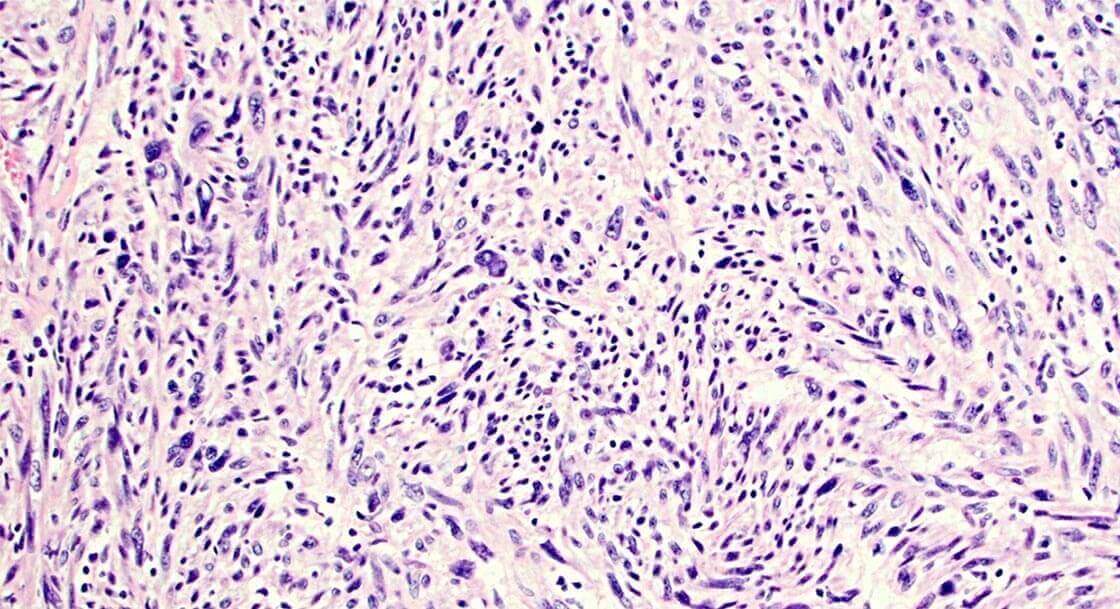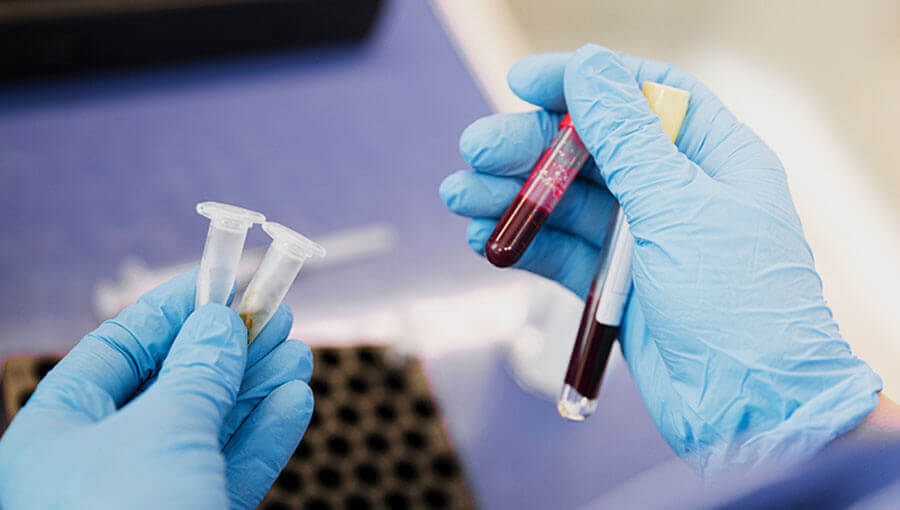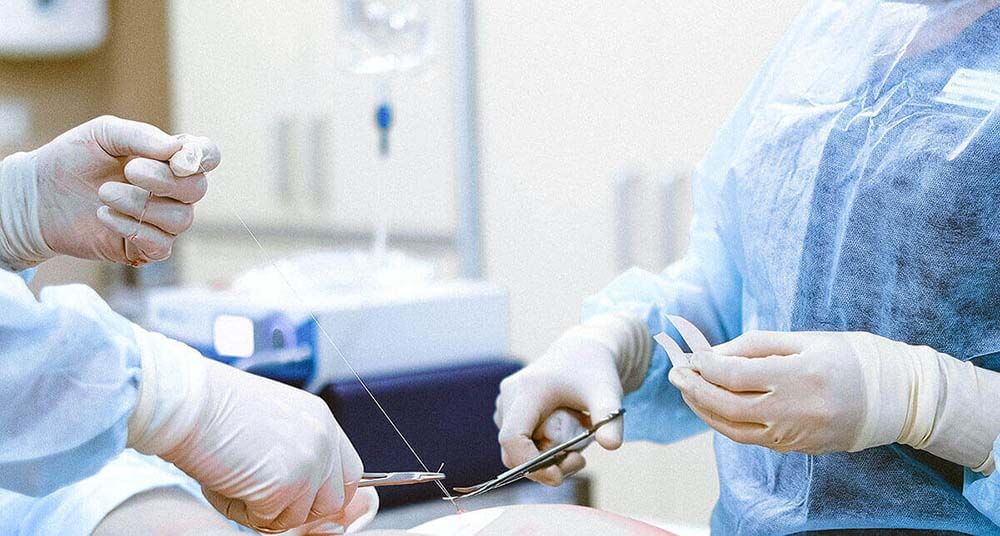Calls for Ukraine
Calls for Europe
Calls for USA

Leiomyosarcoma is a malignant tumor that develops from smooth muscle cells, is characterized by rapid growth and the ability to metastasize in the early stages of its development. The disease can occur in any organ where there is smooth muscle, but most often it is found to be uterine leiomyosarcoma and soft tissue leiomyosarcoma, which is usually localized in the abdomen.
Leiomyosarcoma is a rare malignant neoplasm that most often occurs between the ages of 40 and 60 years. It occurs twice as often in women as in men. The exact reasons for the development of pathology are currently unknown. However, it has been proven that predisposing factors include hereditary predisposition and exposure to radiation.
This is a rather dangerous disease that is difficult to treat. In addition, more than half of the cases after treatment for leiomyosarcoma develop a relapse. However, in modern clinics specializing in the treatment of leiomyosarcoma, the latest treatment methods are used, which make it possible to effectively combat the pathology even in the later stages and in the event of a relapse. The MedTour platform will help you find an advanced clinic with experienced oncologists specializing in the treatment of leiomyosarcoma.
Would you like a free consultation?
To choose the best doctor and sign up for a consultation at the clinic, leave a request on the MedTour website. The medical coordinator will help you choose a doctor and select the best clinic, taking into account your wishes.
Free consultation

Symptoms can vary significantly depending on the location of the pathology. But there are also a number of common symptoms that are typical for this disease:
In addition, each type of leiomyosarcoma has its own specific symptoms.
Depending on the organ in which leiomyosarcoma is found, oncologists distinguish the following types:
Doctors distinguish four stages of this malignant disease:

If leiomyosarcoma is suspected, doctors prescribe a comprehensive examination, which includes laboratory tests and instrumental diagnostics. Tests may vary depending on the type of tumor and its location.
The most commonly used diagnostic methods include:
Special genetic testing is worth mentioning separately. This is the latest diagnostic method that allows to identify hereditary and acquired mutations associated with cancer, as well as determine specific markers for a particular type of cancer. This approach makes it possible to make a diagnosis as accurately as possible and select treatment that will be most effective in each specific case.
To learn more about laboratory diagnostics of malignant diseases in different countries, please contact the MedTour coordinating doctor through the contact form.
Would you like a free consultation?
To choose the best doctor and sign up for a consultation at the clinic, leave a request on the MedTour website. The medical coordinator will help you choose a doctor and select the best clinic, taking into account your wishes.
Free consultation
If this malignant disease is left untreated, on average people live about one year after diagnosis. However, after surgical removal of the tumor, the five-year survival rate is more than 60%.
Unfortunately, in most cases the tumor is diagnosed in late stages and surgery is no longer possible. However, if an accurate diagnosis is made and the latest treatment methods are applied, even in the later stages there is a chance to effectively combat the disease.
Once leiomyosarcoma is diagnosed, treatment may involve a variety of approaches. The most effective is a personalized approach, when treatment methods are selected taking into account the type of leiomyosarcoma, its size, stage and other characteristics.

Surgical removal of the tumor is considered the priority treatment option. If possible, the tumor is removed completely, with additional excision of nearby tissue to reduce the likelihood of recurrence. Nearby lymph nodes in which metastases have appeared can also be removed.
In modern medical centers, such operations are performed in operating rooms equipped with the latest equipment; robotic surgery can be used. This allows surgical intervention to be performed with maximum precision and achieve good results.
Would you like a free consultation?
To choose the best doctor and sign up for a consultation at the clinic, leave a request on the MedTour website. The medical coordinator will help you choose a doctor and select the best clinic, taking into account your wishes.
Free consultation
For leiomyosarcoma, different types of radiation therapy can be used. Traditional external beam radiation therapy is usually given before surgery to reduce the size of the tumor. In addition, it can be used as palliative care in later stages.
Brachytherapy is often used for leiomyosarcoma. In this case, a radioactive element is placed near the tumor. This affects the tumor with fairly high doses of radiation without having a strong negative effect on other parts of the body.
Chemotherapy involves the use of drugs that slow tumor growth and destroy malignant cells. Chemotherapy can be used in combination with surgery or radiotherapy. For example, in the final stages of uterine leiomyosarcoma, treatment may include chemotherapy and radiation.

The use of targeted drugs in the treatment of malignant tumors makes it possible to have a targeted effect on malignant cells. When using drugs belonging to this class, healthy tissues are not negatively affected.
However, in order to correctly select targeted agents, accurate diagnosis is necessary to determine the histological type of the tumor. Such diagnostics can be done in specialized laboratories.
The MedTour coordinator will help you find clinics that offer individual selection of treatment and use the latest targeted drugs.
Would you like a free consultation?
To choose the best doctor and sign up for a consultation at the clinic, leave a request on the MedTour website. The medical coordinator will help you choose a doctor and select the best clinic, taking into account your wishes.
Free consultation
Various immunotherapy methods can be used for leiomyosarcoma. For this purpose, special hormonal agents may be prescribed. In addition, cancer vaccines can be used for malignant soft tissue tumors. Their use makes it possible to activate the immune response and eliminate the body’s tolerance to tumor antigens. Such vaccines are made individually for each patient, since to create them it is necessary to have tumor cells.
Antitumor vaccines can be used simultaneously with other treatment methods; they improve the effectiveness of therapy and significantly reduce the likelihood of relapse and metastases.
To learn more about immunotherapy options and the use of cancer vaccines for your specific case, please contact us.
Would you like a free consultation?
To choose the best doctor and sign up for a consultation at the clinic, leave a request on the MedTour website. The medical coordinator will help you choose a doctor and select the best clinic, taking into account your wishes.
Free consultation
According to statistical data for leiomyosarcoma, the prognosis for five-year survival is approximately:
However, it is important to remember that this is general data. The individual prognosis may vary markedly depending on the type of tumor, the characteristics of its location, the general health of the patient and treatment methods. If the most modern treatment methods are used and a personalized approach is used, the prognosis can improve markedly.
We cooperate with leading medical institutions in the world that treat malignant diseases, have special equipment for accurate diagnosis and modern treatment, and use the latest techniques. You can view the list of the best clinics for the treatment of leiomyosarcoma on our website yourself. To get more detailed information about medical centers, the doctors who work there and the techniques that are used, contact us. The coordinating doctor will help you figure it out, tell you about the nuances of treatment in different clinics and help you make the best choice of a medical institution taking into account your medical needs.
Would you like a free consultation?
To choose the best doctor and sign up for a consultation at the clinic, leave a request on the MedTour website. The medical coordinator will help you choose a doctor and select the best clinic, taking into account your wishes.
Free consultation
Would you like to find a good specialist for the treatment of leiomyosarcoma? The MedTour coordinator doctor will advise you on this issue for free, tell you about the best doctors in different countries, and advise on prices for consultation and treatment with leading specialists in this field. Contact us to receive information on all your questions.
Would you like a free consultation?
To choose the best doctor and sign up for a consultation at the clinic, leave a request on the MedTour website. The medical coordinator will help you choose a doctor and select the best clinic, taking into account your wishes.
Free consultation
Please rate the work of MedTour
